Anti-aging treatments have become increasingly popular as people seek ways to maintain a youthful appearance. These treatments aim to reduce signs of aging like wrinkles, fine lines, and age spots.
Many effective anti-aging options exist, from topical products to non-invasive procedures that can help improve skin texture and elasticity.
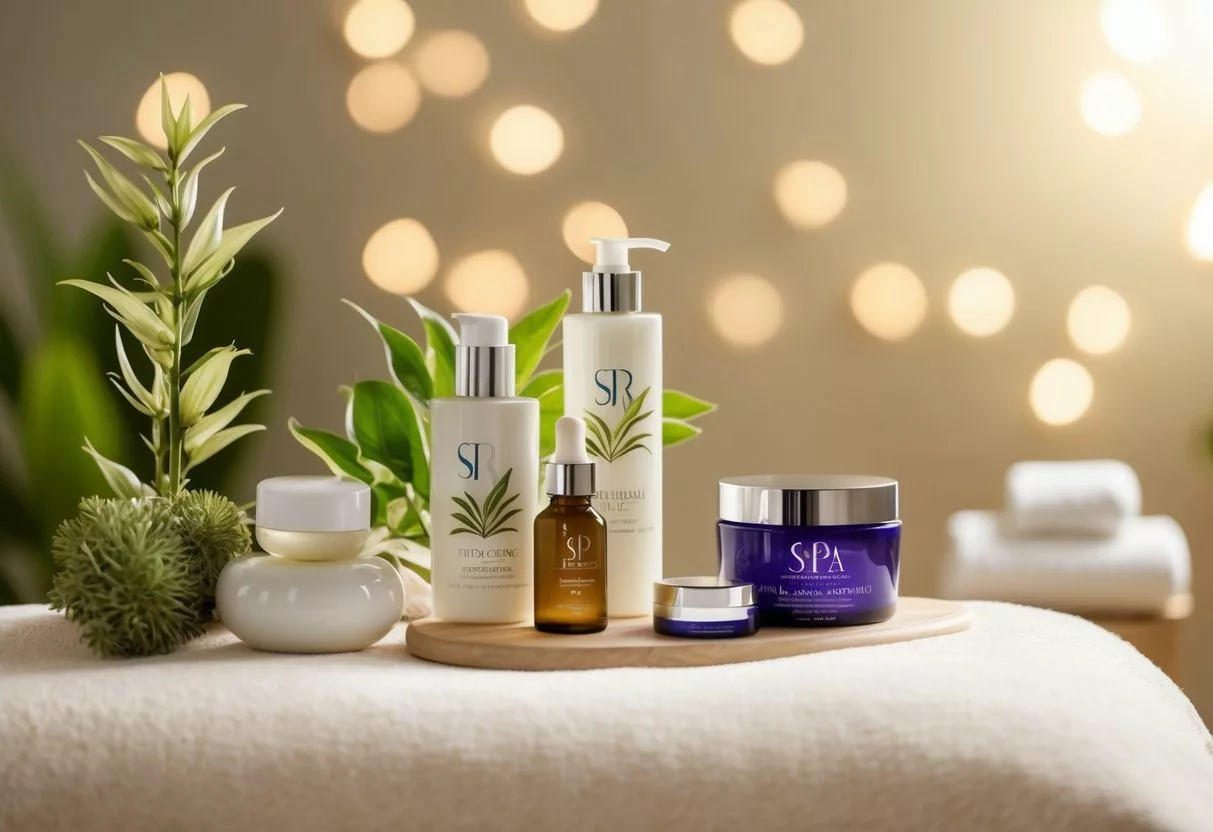
Common anti-aging treatments include botulinum toxin injections, chemical peels, and dermal fillers. These procedures can help smooth wrinkles and restore volume to the face.
At-home skincare routines also play a crucial role in fighting signs of aging. Using sunscreen daily, moisturizing regularly, and applying retinoids can help protect and rejuvenate the skin.
While no treatment can completely stop the aging process, a combination of professional treatments and good skincare habits can significantly improve the appearance of aging skin.
It’s important to consult with a dermatologist to determine the best anti-aging approach for individual skin types and concerns.
The Science of Skin Aging
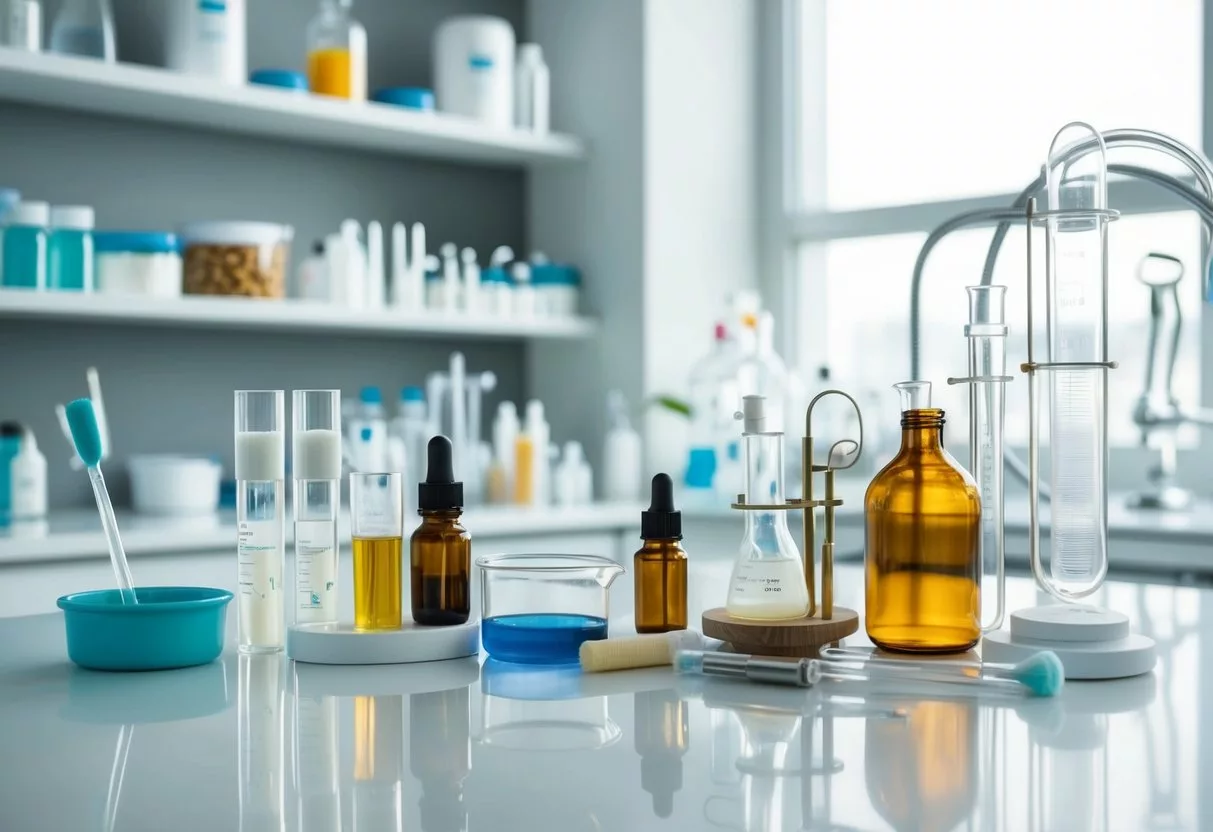
Skin aging involves changes in collagen and elastin production. These proteins play key roles in skin structure and function.
Understanding Collagen Production
Collagen is a crucial protein for skin health. It gives skin its strength and structure.
As we age, our bodies make less collagen. This leads to thinner skin and more wrinkles.
UV light from the sun can damage collagen. This speeds up skin aging. Free radicals also break down collagen[1]. They come from things like pollution and smoking.
Some ways to boost collagen:
- Eat foods rich in vitamin C
- Use sunscreen daily
- Try retinol creams
Role of Elastin and Skin Elasticity
Elastin is another important skin protein. It helps skin bounce back after stretching. Like collagen, elastin production slows with age.
As elastin decreases, skin loses its firmness[2]. This can cause sagging and fine lines. Gravity makes these changes more noticeable over time.
To support elastin:
- Stay hydrated
- Eat a balanced diet
- Protect skin from sun damage
Regular exercise may also help maintain skin elasticity. It boosts blood flow to the skin, which can help keep it healthy.
Types of Anti-Aging Treatments
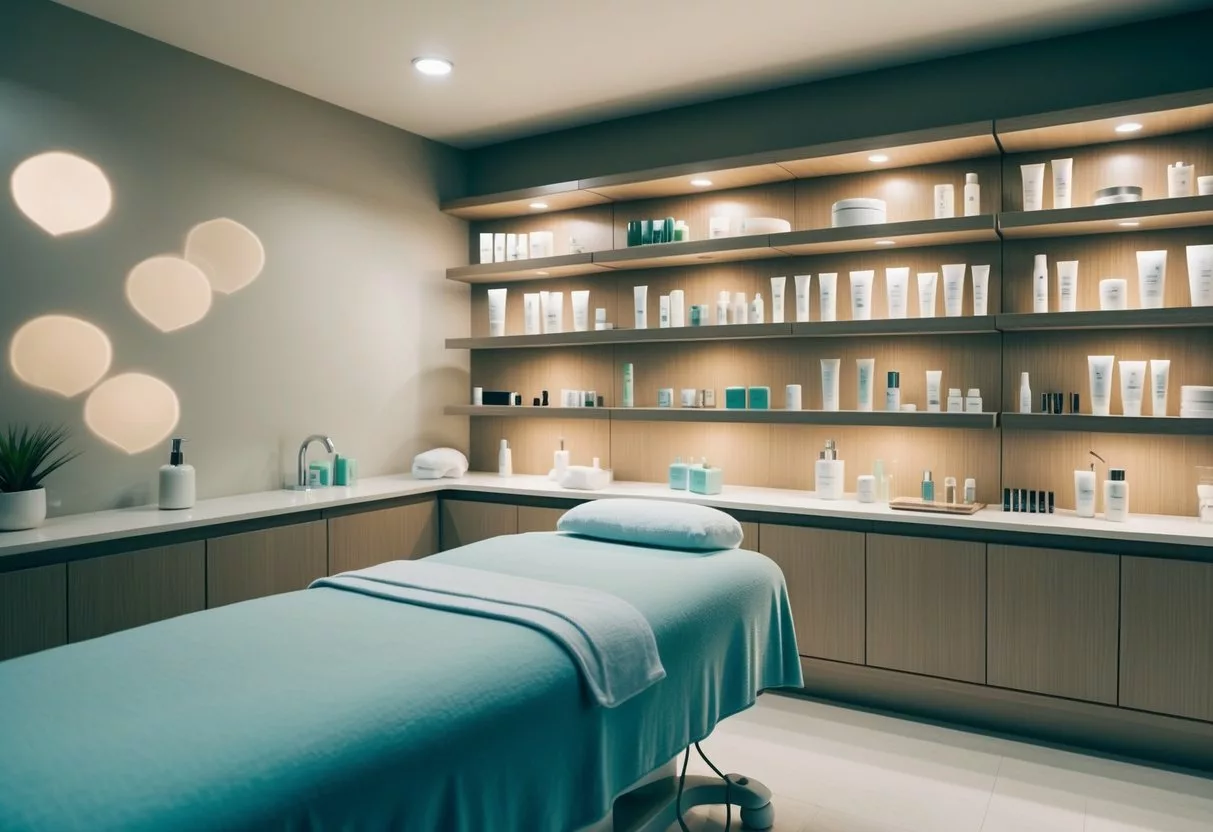
Anti-aging treatments come in many forms, from topical products to surgical procedures. Each type targets different aspects of aging and offers unique benefits. The most common treatments include creams, injections, laser therapies, and surgical options.
Topical Agents and Creams
Topical anti-aging products are often the first line of defense against skin aging. Retinoids, like retinol, are key ingredients[3] that boost collagen production and cell turnover. They help reduce fine lines and improve skin texture.
Antioxidants protect skin from free radical damage. Vitamin C serums brighten skin and fight sun damage. Other popular ingredients include:
- Hyaluronic acid for hydration
- Peptides to stimulate collagen
- Niacinamide for skin barrier support
- Alpha hydroxy acids (AHAs) for exfoliation
Over-the-counter creams can provide mild improvements. Prescription-strength retinoids like tretinoin offer stronger effects. Regular use of these products can lead to noticeable changes in skin appearance over time.
Injectable Treatments
Injectable treatments provide quick results with minimal downtime. Botox and similar neurotoxins temporarily paralyze muscles to reduce wrinkles, especially on the forehead and around the eyes.
Dermal fillers add volume to areas that lose fat with age. They can:
- Plump lips
- Soften nasolabial folds
- Enhance cheeks
- Fill under-eye hollows
Hyaluronic acid fillers like Juvederm and Restylane are popular choices. They last 6-18 months. Longer-lasting options include Radiesse (calcium hydroxylapatite) and Sculptra (poly-L-lactic acid).
Laser and Light Therapies
Laser treatments target various skin concerns. They work by creating controlled damage to stimulate healing and collagen production. Common types include:
- Fractional lasers for fine lines and sun damage
- CO2 lasers for deeper wrinkles and scars
- Nd lasers for skin tightening
Light-based therapies like intense pulsed light (IPL) treat pigmentation issues and redness. They can improve overall skin tone and texture.
Radiofrequency treatments heat deeper skin layers to tighten and lift. They’re often combined with microneedling for enhanced results. These treatments require multiple sessions and results develop over time.
Surgical Procedures
For more dramatic results, surgical options can address advanced signs of aging. Facelifts remove excess skin and tighten underlying muscles. They provide long-lasting improvements to the lower face and neck.
Eyelid surgery (blepharoplasty) addresses droopy eyelids and under-eye bags. Brow lifts elevate sagging eyebrows and reduce forehead wrinkles.
Fat transfer techniques use a person’s own fat to restore volume in areas like the cheeks. This can provide a more youthful contour to the face.
While surgical procedures offer significant changes, they come with longer recovery times and higher risks than non-invasive options. Careful consideration and consultation with a board-certified plastic surgeon are essential.
Skin Care Routines for Aging Skin
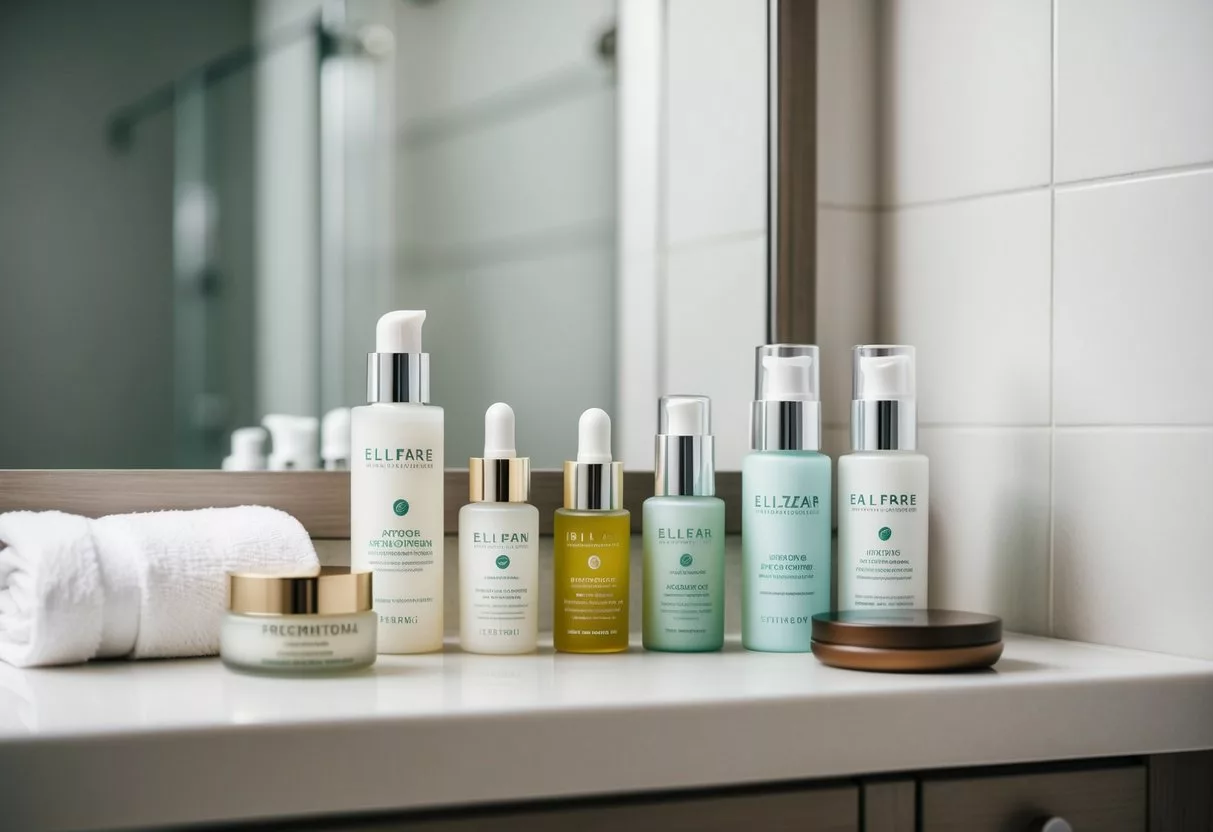
A good skin care routine can help address signs of aging. The right products and techniques can make a big difference in how your skin looks and feels.
Daily Skin Care Essentials
Start with a gentle cleanser[4] to remove dirt and oil without stripping the skin. Use lukewarm water and pat dry. Apply a vitamin C serum to brighten skin and protect from free radicals.
Next, use a moisturizer with hyaluronic acid to hydrate and plump the skin. This helps reduce the appearance of fine lines.
Sunscreen is crucial. Choose a broad-spectrum SPF 30 or higher and apply it every day, even when it’s cloudy. This protects against UV damage that causes premature aging.
At night, use a retinoid product. Retinoids boost collagen production and cell turnover. Start with a low concentration a few times a week and slowly increase use.
Advanced Skin Care Techniques
Exfoliation removes dead skin cells, improving texture and tone. Use a gentle chemical exfoliant like alpha-hydroxy acids (AHAs) once or twice a week. Don’t overdo it, as this can irritate aging skin.
Peptide creams[5] can help firm the skin and boost collagen. Look for products with Matrixyl or copper peptides.
Consider adding a facial oil at night for extra hydration. Oils like rosehip or jojoba are good choices for mature skin.
Use an eye cream to target the delicate skin around the eyes. Look for ingredients like caffeine to reduce puffiness and retinol to smooth fine lines.
Understanding and Choosing Dermal Fillers
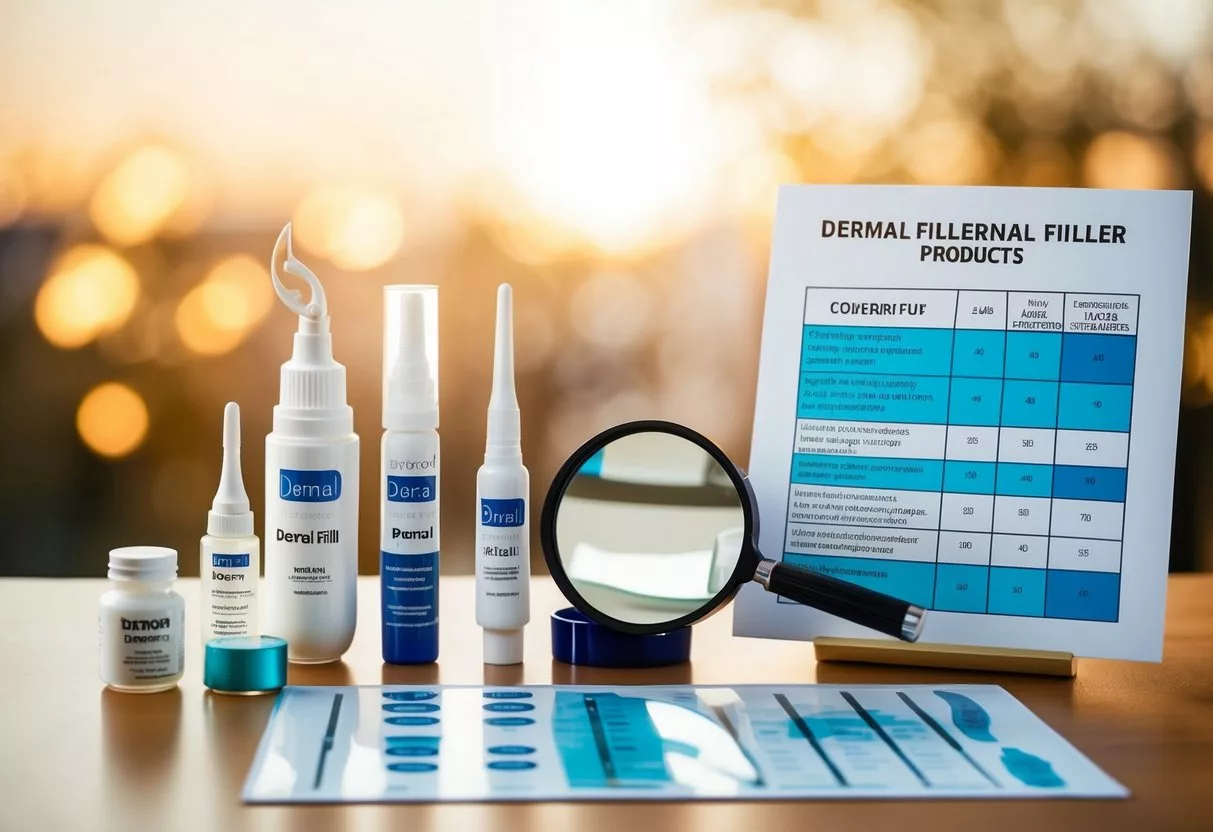
Dermal fillers are injectable substances used to smooth wrinkles and restore volume to the face. They come in different types, each with unique properties and uses.
Hyaluronic Acid Fillers
Hyaluronic acid[6] is a natural substance in the skin that helps keep it plump and hydrated. These fillers are popular for treating fine lines and wrinkles.
They work well for areas like crow’s feet and nasolabial folds. The effects usually last 6-12 months.
Hyaluronic acid fillers are reversible. A doctor can dissolve them if needed.
Brands include Juvederm and Restylane. They come in different thicknesses for various areas of the face.
Synthetic Fillers
Synthetic fillers are lab-made substances designed to last longer than hyaluronic acid fillers.
Calcium hydroxylapatite (Radiesse) stimulates collagen production. It’s often used for deeper wrinkles and facial sculpting.
Poly-L-lactic acid (Sculptra) helps rebuild facial volume gradually over several months. It’s good for larger areas of volume loss.
These fillers can last 1-2 years or more. They’re not reversible, so choosing an experienced provider is crucial.
Autologous Wrinkle Fillers
Autologous fillers use the patient’s own fat or tissue. This method is also called fat grafting or fat transfer.
A doctor removes fat from one area of the body and injects it into the face. This can fill wrinkles and add volume to cheeks or lips.
The results can be long-lasting, but not all transferred fat survives. Some patients need multiple treatments.
This option is good for those who want a natural approach. It avoids risks of allergic reactions to synthetic materials.
Preventing and Treating Sun Damage

Sun damage can harm skin and speed up aging. Taking steps to protect skin from the sun and treat existing damage is key for a youthful look.
The Importance of Sun Protection
Protecting skin from the sun[7] is crucial to prevent premature aging and skin cancer. Use sunscreen with at least SPF 30 daily, even on cloudy days. Apply it 15-30 minutes before going outside and reapply every 2 hours.
Wear protective clothing like wide-brimmed hats and long sleeves. Seek shade, especially between 10 am and 4 pm when UV rays are strongest.
Sunglasses shield the delicate eye area from UV damage. Choose ones that block 99-100% of UVA and UVB rays.
Avoid tanning beds. They emit harmful UV rays that damage skin cells and increase skin cancer risk.
Reversing Visible Sun Damage
While some sun damage can’t be undone, treatments can improve skin’s appearance. Retinoids[8] are powerful for fading dark spots and smoothing wrinkles. Start with over-the-counter retinol and work up to prescription strength.
Vitamin C serums brighten skin and fade dark spots. Use in the morning under sunscreen for added protection.
Chemical peels and laser treatments can target deeper damage. They remove the top layer of skin to reveal fresher skin underneath.
For severe sun damage, dermatologists may recommend more intensive treatments like:
- Photodynamic therapy
- Cryotherapy
- Prescription creams
A good skincare routine is key. Cleanse, moisturize, and always use sun protection to prevent further damage.
Chemical Peels and Exfoliation
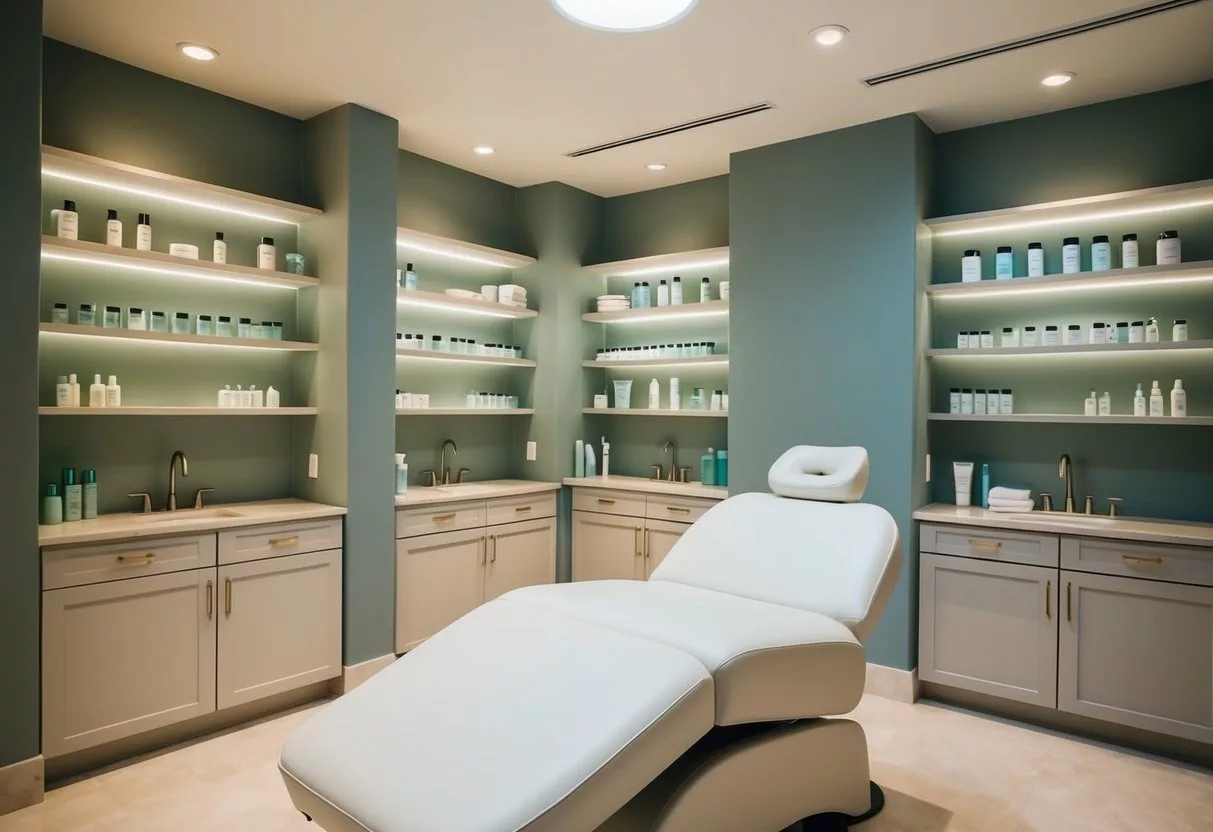
Chemical peels and exfoliation are popular anti-aging treatments that remove dead skin cells and reveal fresher skin underneath. These methods can improve skin texture, reduce fine lines, and even out skin tone.
Benefits of Chemical Peels
Chemical peels offer several advantages for skin rejuvenation. They can diminish fine lines and wrinkles[9] while improving overall skin texture. These treatments are effective for reducing acne scars and uneven skin coloring.
Chemical peels work by applying a solution that removes the top layers of skin. This process stimulates collagen production and cell turnover. As a result, skin appears smoother and more youthful.
Different strengths of chemical peels are available. Mild peels can brighten skin with minimal downtime. Deeper peels provide more dramatic results but require longer recovery periods.
Types of Exfoliants
Exfoliants come in two main categories: physical and chemical. Physical exfoliants use small particles or brushes to remove dead skin cells. Chemical exfoliants dissolve the bonds between skin cells.
Alpha hydroxy acids (AHAs) like glycolic acid are popular chemical exfoliants. They work well for dry or sun-damaged skin. Beta hydroxy acids (BHAs) like salicylic acid are better for oily or acne-prone skin.
At-home exfoliating products often contain lower concentrations of acids. These are gentler and can be used more frequently. Professional treatments use stronger formulas for more intense exfoliation.
Enzyme exfoliants offer a milder option. They work by breaking down dead skin cells without harsh scrubbing. These are good for sensitive skin types.
Innovations in Laser Treatment
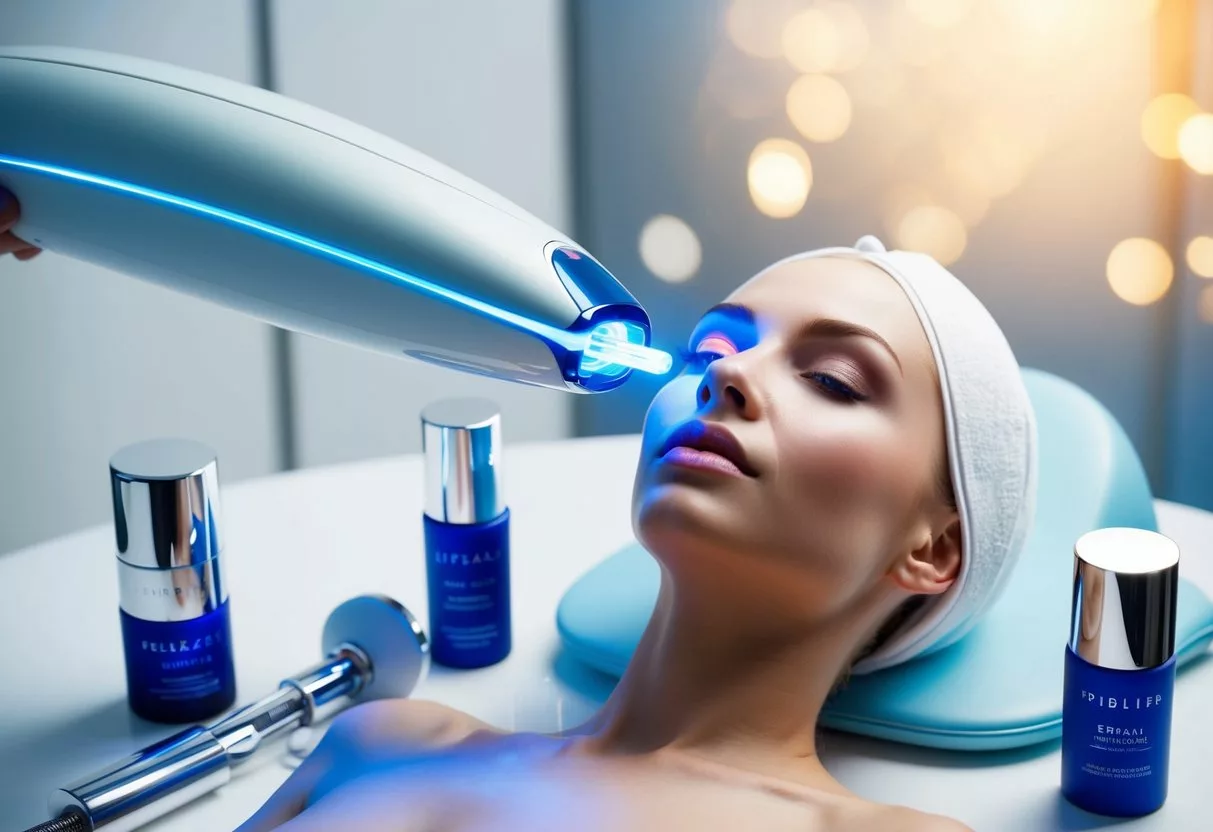
Laser treatments have made big strides in recent years. New types of lasers can target specific skin issues with more precision and less downtime.
Laser Skin Resurfacing
Laser skin resurfacing uses focused light beams to improve skin texture. It can help with fine lines, scars, and sun damage. The UltraClear laser is a new option that offers different treatment levels.
For mild concerns, a light treatment can be done over lunch. Deeper treatments tackle more severe issues. These stronger treatments may need more recovery time.
Laser resurfacing works by removing outer skin layers. This triggers the body to make new skin cells. The result is smoother, younger-looking skin.
Fractional Lasers
Fractional lasers are a newer type of laser treatment. They create tiny zones of injury in the skin. This leaves healthy skin between the treated areas.
The Fraxel laser is a well-known fractional laser. It can improve skin texture, reduce wrinkles, and fade dark spots. Fraxel treatments often need less downtime than full laser resurfacing.
Another option is the Halo laser. It uses both ablative and non-ablative wavelengths. This combo can treat many skin issues at once. It’s good for wrinkles, scars, large pores, and pigment problems.
Fractional lasers can give big results with less risk. They’re a good choice for many people looking to improve their skin.
Non-Surgical Skin Tightening Techniques
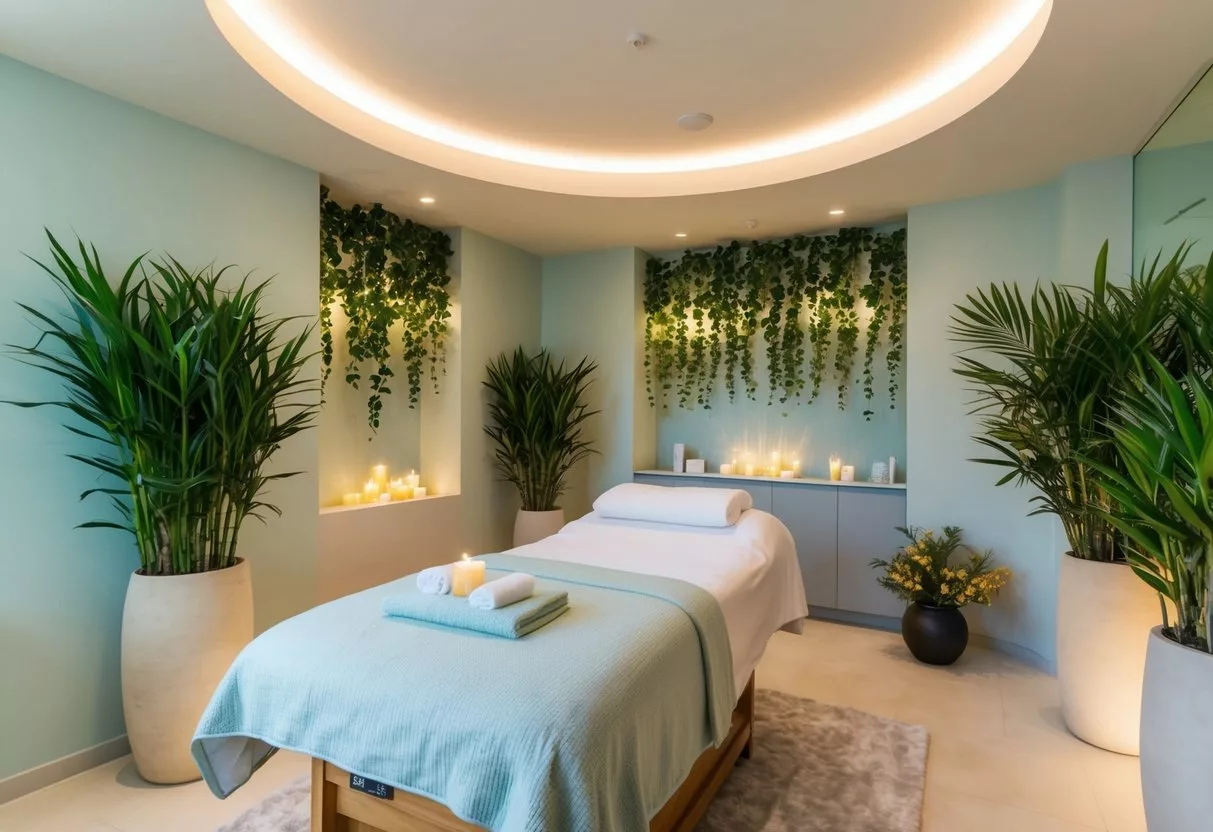
Non-surgical skin tightening offers ways to firm loose skin without going under the knife. These methods use energy-based devices to heat the skin’s deeper layers, stimulating collagen production.
Radiofrequency Treatments
Radiofrequency (RF) treatments use electrical energy to heat the skin’s deep layers. This heat triggers collagen production, which helps tighten and smooth the skin over time.
RF treatments can be done on various body parts, including the face, neck, and abdomen. The procedure is usually painless and requires no downtime.
Radiofrequency combined with microneedling[10] can enhance results. This combo treatment creates tiny punctures in the skin while delivering RF energy, boosting collagen production even more.
Results from RF treatments are gradual. Patients often need multiple sessions for best results. The effects can last several months to a year, depending on the individual.
Ultrasound Skin Tightening
Ultrasound skin tightening uses focused ultrasound energy to heat specific layers of skin. This targeted approach stimulates collagen production in deeper skin layers.
Ultherapy is a popular brand[11] for ultrasound skin tightening. It’s FDA-cleared to treat the brow, chin, neck, and chest areas.
The treatment can be uncomfortable but is typically well-tolerated. There’s usually no downtime, allowing patients to return to normal activities right away.
Results from ultrasound treatments appear gradually over 2-3 months. The effects can last up to a year or more. Some people only need one treatment, while others may benefit from periodic touch-ups.
Understanding Injectables and Neuromodulators
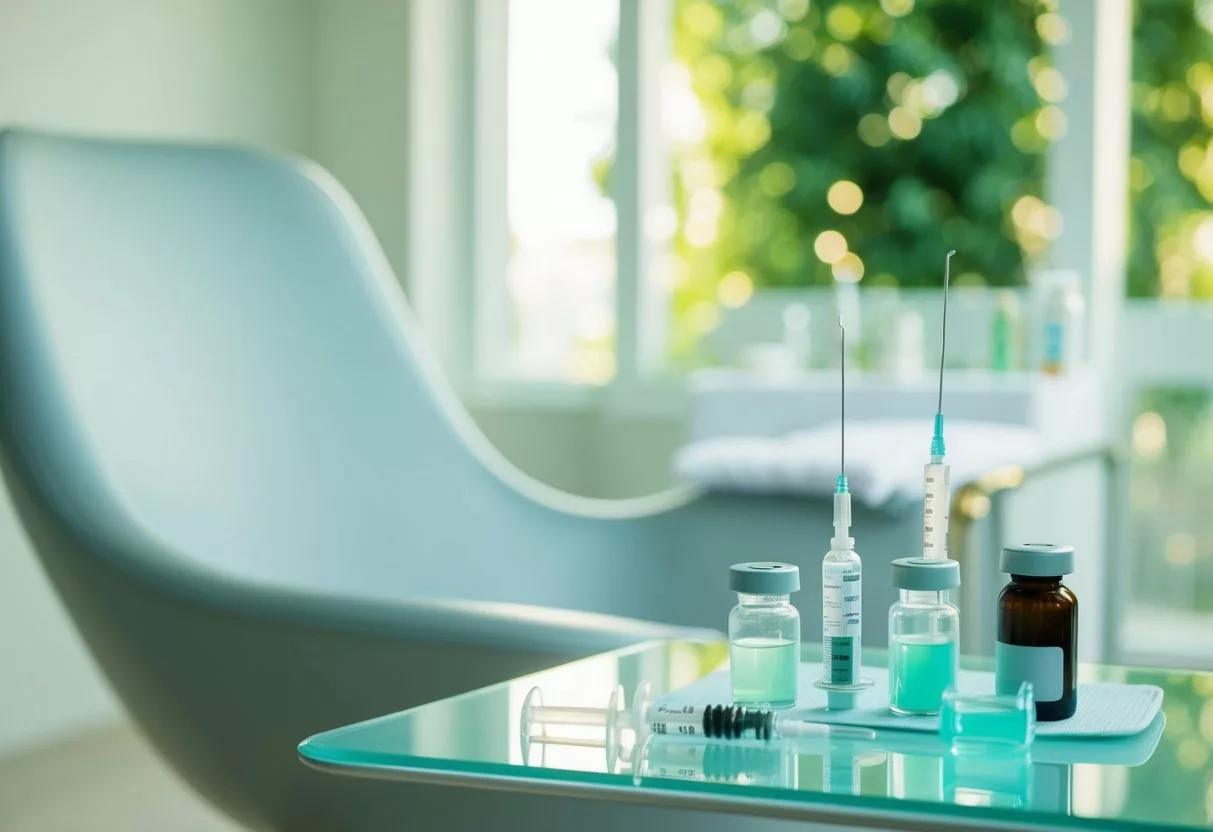
Injectables and neuromodulators are popular anti-aging treatments that can reduce wrinkles and improve facial appearance. These non-surgical options work in different ways to address signs of aging.
Botulinum Toxin Type A
Botulinum toxin type A is the main ingredient in several well-known neuromodulator brands. It works by stopping nerve signals to specific muscles, which prevents them from contracting.
The most common brands are Botox, Dysport, and Xeomin. These injectables are used to treat dynamic wrinkles caused by muscle movement.
Botox was the first to be approved by the FDA in 2002. Dysport followed in 2009, and Xeomin in 2011.
These treatments typically last 3-4 months. They are most effective for lines on the forehead, between the eyebrows, and around the eyes.
Other Injectable Options
While neuromodulators target muscle movement, dermal fillers[12] address volume loss and deep wrinkles. They work by adding volume beneath the skin’s surface.
Fillers can treat static wrinkles, which are visible even when the face is at rest. They’re often used for nasolabial folds, marionette lines, and lip enhancement.
Common filler ingredients include hyaluronic acid, calcium hydroxylapatite, and poly-L-lactic acid. These substances are naturally absorbed by the body over time.
The effects of fillers can last anywhere from 6 months to 2 years, depending on the product used and the area treated.
Cosmetic Surgery: Evaluating Your Options
Cosmetic surgery offers ways to address visible signs of aging. These procedures can help tighten skin and reshape facial features for a more youthful look.
Facelift Procedures
A facelift can improve aging skin[13] by tightening loose skin and muscles. It targets sagging in the lower face and neck areas.
During the surgery, a doctor makes cuts near the hairline and ears. They lift and reposition facial tissues. Extra skin gets removed.
Facelifts often include a neck lift to fix a “turkey neck.” This corrects loose skin and excess fat in the neck. Results can last 5-10 years.
Risks include scarring, nerve damage, and infection. Recovery takes 2-3 weeks. Swelling and bruising are common after surgery.
Eyelid Surgery and Brow Lifts
Eyelid surgery, or blepharoplasty, removes excess skin and fat around the eyes. It can fix droopy upper lids and puffy lower lids. The procedure makes eyes appear more open and alert.
Brow lifts raise sagging eyebrows. This smooths forehead wrinkles and frown lines. It can be done alone or with eyelid surgery.
Both surgeries are outpatient procedures. They use local anesthesia with sedation. Recovery takes 1-2 weeks. Risks include dry eyes, asymmetry, and vision changes.
These cosmetic procedures can enhance facial features. They work best for mild to moderate signs of aging. Results typically last several years.
The Role of Nutrition and Lifestyle
Good food choices and healthy habits can slow down aging. These factors affect how our skin looks and how our body works as we get older.
Dietary Impacts on Skin Health
A diet rich in antioxidants[14] helps fight skin damage. Fruits and veggies are great sources. Vitamin C boosts collagen production, keeping skin firm. Good sources include citrus fruits, berries, and bell peppers.
Vitamin E protects cell membranes. It’s found in nuts, seeds, and vegetable oils. Eating foods with these vitamins can improve skin health.
Staying hydrated is key for skin moisture. Drinking enough water helps prevent dry skin. Aim for 8 glasses a day.
Omega-3 fatty acids from fish or flaxseed can reduce inflammation. This may help skin look younger.
Lifestyle Factors Affecting Aging
Regular exercise boosts blood flow. This brings nutrients to skin cells. It also helps remove waste products. Aim for 30 minutes of moderate activity most days.
Getting enough sleep is crucial. During sleep, the body repairs itself. Lack of sleep can lead to dull skin and dark circles.
Smoking speeds up skin aging. It narrows blood vessels and reduces blood flow to the skin. This can cause wrinkles and a dull complexion. Quitting smoking can improve skin health.
Stress management is important. High stress levels can damage skin cells. Try meditation, yoga, or deep breathing to relax.
Sun protection is vital. UV rays cause most skin aging. Use sunscreen daily and wear protective clothing when outdoors.
Frequently Asked Questions
Anti-aging treatments vary based on age and individual needs. Effective options range from at-home skincare routines to advanced dermatological procedures. Choosing the right treatment depends on skin type, concerns, and professional guidance.
What are the most effective anti-aging treatments for someone in their 40s?
For people in their 40s, neuromodulators and hyaluronic acid fillers are highly effective anti-aging treatments. These help reduce fine lines and wrinkles while restoring volume to the face.
Laser skin rejuvenation is another powerful option. It targets sun damage and promotes collagen production for smoother, more youthful-looking skin.
How can individuals in their 50s maintain youthful skin with anti-aging treatments?
In the 50s, a combination of treatments often yields the best results. Radiofrequency and microneedling treatments can tighten skin and improve texture.
Regular use of retinoids and peptides in skincare routines can help maintain skin elasticity. Professional chemical peels may also be beneficial for addressing age spots and uneven skin tone.
Which at-home anti-aging treatments are recommended for daily skincare routines?
Daily sun protection is crucial for preventing premature aging. Using a broad-spectrum SPF 30 or higher sunscreen is essential.
Antioxidants like vitamin C help protect skin from free radical damage. Incorporating a retinol product at night can boost cell turnover and collagen production.
Can a dermatologist provide more advanced anti-aging treatments than over-the-counter products?
Yes, dermatologists offer more advanced and targeted treatments. They can prescribe stronger retinoids and perform professional-grade chemical peels.
Laser treatments and IPL therapy[15] are available only through professionals. These treatments address specific concerns like pigmentation and texture more effectively than over-the-counter products.
How does one choose the right anti-aging treatment among the options available nearby?
Consult with a board-certified dermatologist or skincare professional. They can assess your skin type and concerns to recommend appropriate treatments.
Consider your budget and time commitment. Some treatments require multiple sessions or ongoing maintenance, while others offer more immediate results.
Are there specific anti-aging treatments that are beneficial for people in their 60s?
For those in their 60s, treatments that address volume loss and skin laxity are often beneficial. Dermal fillers can restore facial volume and minimize deep wrinkles.
Non-invasive skin tightening procedures like ultrasound therapy or radiofrequency treatments can improve skin firmness. These treatments stimulate collagen production for long-lasting results.
References
- Aging Skin: Causes & Treatments. https://www.usdermatologypartners.com/blog/the-science-of-skin-aging/ Accessed October 28, 2025
- Skin Ageing: Pathophysiology and Current Market Treatment Approaches. https://www.ncbi.nlm.nih.gov/pmc/articles/PMC7403684/ Accessed October 28, 2025
- Best Anti-Aging Treatments: Current Options, Benefits and Efficacy. https://dermcollective.com/noninvasive-anti-aging-treatments/ Accessed October 28, 2025
- Anti-Aging Skin Care: Ingredients and Routine. https://health.clevelandclinic.org/anti-aging-skin-care Accessed October 28, 2025
- Anti-Aging Skin Care Routines for Every Age, From a Dermatologist. https://www.today.com/health/skin-beauty/anti-aging-skin-care-routines-every-age-dermatologist-rcna81237 Accessed October 28, 2025
- Dermal fillers: The good, the bad and the dangerous. https://www.health.harvard.edu/blog/dermal-fillers-the-good-the-bad-and-the-dangerous-201907152561 Accessed October 28, 2025
- Sun damage and your skin. https://www.aad.org/public/everyday-care/sun-protection/sun-damage-skin Accessed October 28, 2025
- Retinoids. https://www.health.com/beauty/anti-aging-skincare-for-sun-damage Accessed October 28, 2025
- Chemical Peels: Types of Peels, Conditions Treated, What to Expect. https://my.clevelandclinic.org/health/treatments/11010-chemical-peels Accessed October 28, 2025
- 7 Non-Surgical Treatments to Firm Loose Skin, Recommended by Dermatologists. https://www.allure.com/story/non-surgical-procedures-to-firm-loose-skin Accessed October 28, 2025
- Non-Surgical Skin Tightening. https://www.americanboardcosmeticsurgery.org/procedure-learning-center/non-surgical-procedures/skin-tightening/ Accessed October 28, 2025
- The Pro's and Cons of Different Types of Anti-Aging Injectable Treatments. https://www.sipderm.com/neuromodulators-vs-injectable-fillers/ Accessed October 28, 2025
- How Facial Rejuvenation Procedures Can Improve Aging Skin. https://www.hopkinsmedicine.org/health/wellness-and-prevention/cosmetic-procedures/how-facial-rejuvenation-procedures-can-improve-aging-skin Accessed October 28, 2025
- Diet and Skin Aging—From the Perspective of Food Nutrition. https://www.ncbi.nlm.nih.gov/pmc/articles/PMC7146365/ Accessed October 28, 2025
- What to Know About Anti-Aging Cosmetic Treatments. https://health.usnews.com/wellness/slideshows/what-to-know-about-anti-aging-cosmetic-treatments Accessed October 28, 2025
